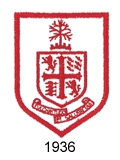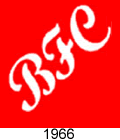Bournemouth
Bournemouth trace their roots back to 1890 and the formation of Boscombe St Johns Institute FC. When this club was wound up in 1899, several members, meeting under a gas lamp in Gladstone Road, agreed to form Boscombe FC. The new club played in the Bournemouth & District Junior League but rose to sufficient prominence that around the turn of the century they joined the Hampshire League. In 1910 Mr JE Cooper-Dean granted the club a long lease on some waste ground which was developed into the club's home, named Dean Court, after their benefactor. The club nickname of "The Cherries" dates from this period and is supposed to be a reference to the nearby fruit orchards on the Cooper-Dean estate. A rather less romantic version links the name to the cherry-red and white striped shirts the club wore.
The club was ambitious and when the Football League formed a Third Division comprising the Southern League First Division clubs, Boscombe successfully applied to join the rump Southern League. Three years later, Boscombe successfully applied to join the League. To mark the occasion (and to attract wider support locally), the club changed its name to Bournemouth & Boscombe Athletic, the longest name in League history.
 The Cherries were to remain in the Third Division (South) until 1958 when they became founder members of the new (national) Third Division, where they remained until they were relegated in 1970. In the mid Thirties the club adopted Arsenal style shirts adorned with a crest derived from the arms of the twin towns of Bournemouth and Boscombe but the new image failed to create an impact on the pitch. The crest made several appearances right up until 1974-75.
The Cherries were to remain in the Third Division (South) until 1958 when they became founder members of the new (national) Third Division, where they remained until they were relegated in 1970. In the mid Thirties the club adopted Arsenal style shirts adorned with a crest derived from the arms of the twin towns of Bournemouth and Boscombe but the new image failed to create an impact on the pitch. The crest made several appearances right up until 1974-75.
In 1956-57, the club enjoyed a moment of national prominence by beating First Division Wolves and Spurs in the FA Cup before they were defeated by two controversial goals by Manchester United in the quarter-final.
 In the late Sixties monogrammes became fashionable and Bournemouth's shirts were emblazoned with "BFC" in various, unusual formats. It is interesting to note that the rather cumbersome initials of the club, B&BFC, were not used, presaging the change of name that would come in 1972.
In the late Sixties monogrammes became fashionable and Bournemouth's shirts were emblazoned with "BFC" in various, unusual formats. It is interesting to note that the rather cumbersome initials of the club, B&BFC, were not used, presaging the change of name that would come in 1972.
In 1971, Bournemouth were relegated to the Fourth Division for the first time but bounced back immediately with manager John Bond and sensational striker Ted MacDougall setting the division alight. Bond had earlier introduced a smart new black and red strip, modeled on AC Milan, and in 1972 the club adopted the rather stylish title of AFC Bournemouth. After narrowly missing out on promotion to the second Division, both Bond and MacDougall left for greater things and in 1975 the club were back in the Fourth Division.
 In 1981 the club adopted a rather swish new logo, which has served them for over 30 years. A detail of note is that the original red and white stripes are preserved in this badge. During the 1980s, under manager Harry Redknapp, Bournemouth enjoyed their finest period. In January 1984 Bournemouth beat holders Manchester United in the FA Cup. In 1987 the club won the Third Division championship for the first time and spent a dramatic three years in the Second Division.
In 1981 the club adopted a rather swish new logo, which has served them for over 30 years. A detail of note is that the original red and white stripes are preserved in this badge. During the 1980s, under manager Harry Redknapp, Bournemouth enjoyed their finest period. In January 1984 Bournemouth beat holders Manchester United in the FA Cup. In 1987 the club won the Third Division championship for the first time and spent a dramatic three years in the Second Division.
By the mid-Nineties, financial problems had reached crisis point and the club went into receivership in 1997. With no rich benefactor on the horizon the future looked bleak and at one stage the club were 15 minutes away from closure. A successful bid from the Supporters Trust meant that AFC Bournemouth survived and became the first community owned professional club in Europe. In April 2001, the Cherries temporarily moved in with Dorchester FC while their Dean Court stadium was rebuilt. Work was completed in November 2001 but the season was to end in relegation to Nationwide Division Three. Happily they were promoted via the play-offs the following season.
Since the 1970s AFC Bournemouth have worn a variety of eye-catching kits based on the combination of red, black and white.
